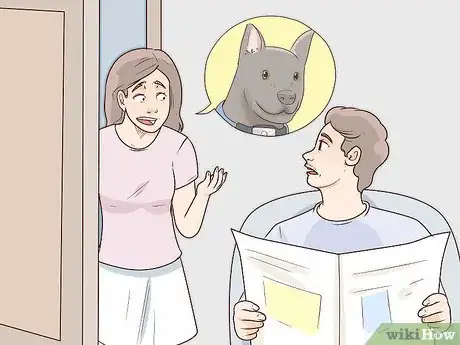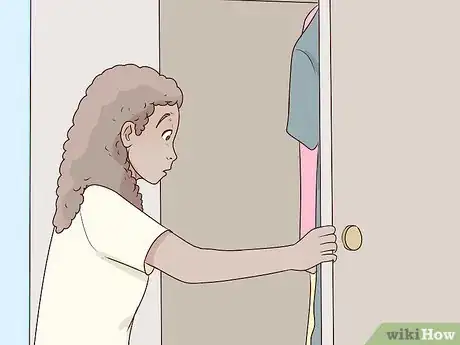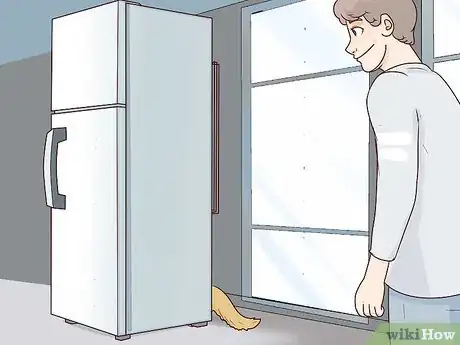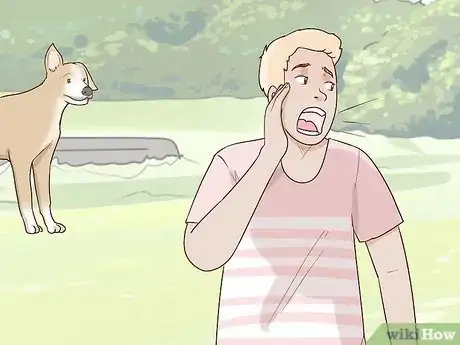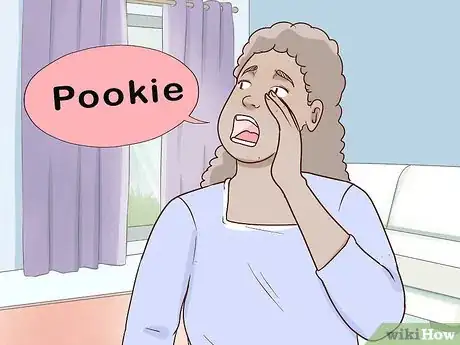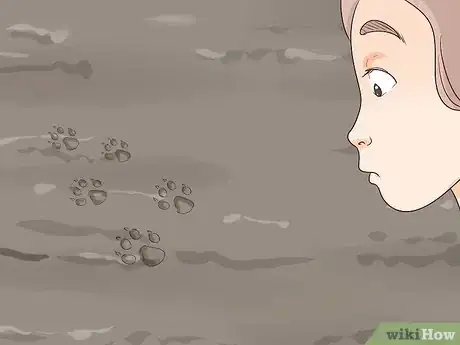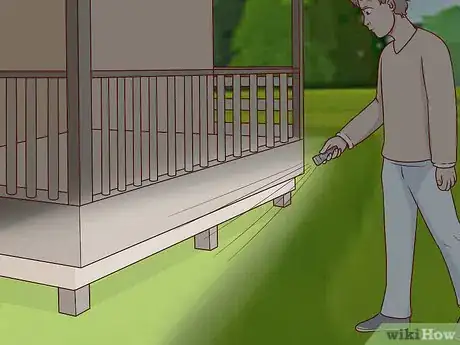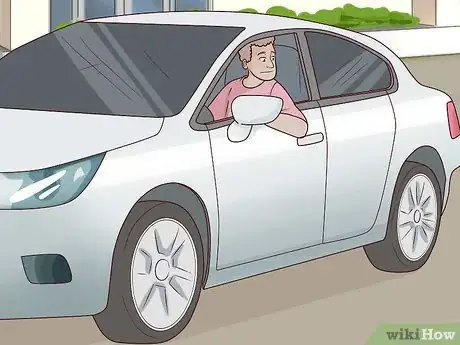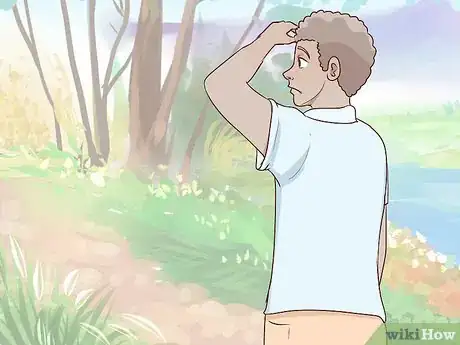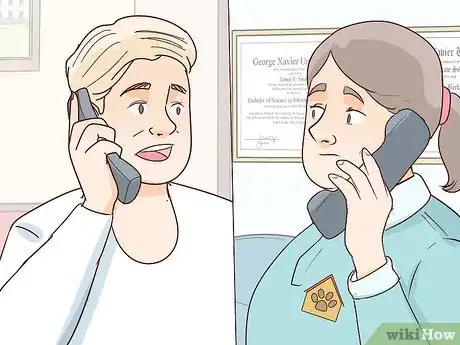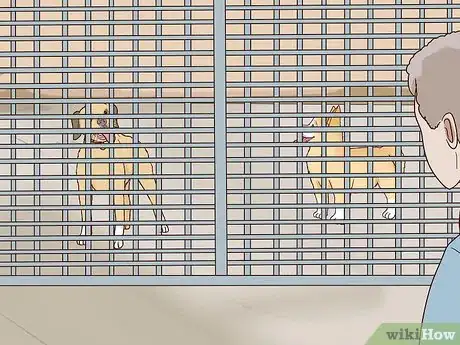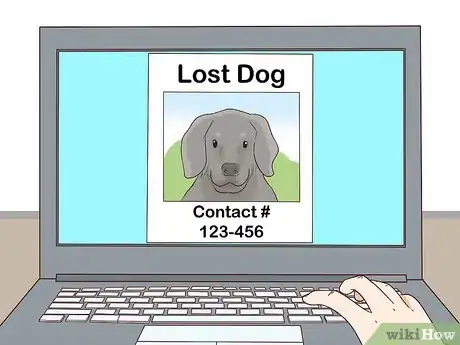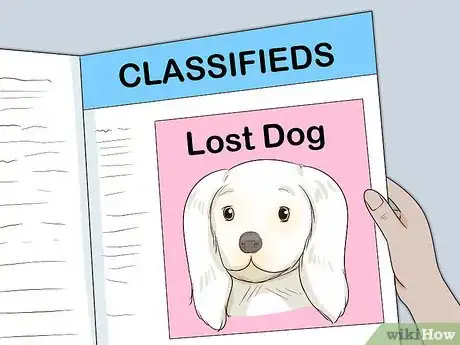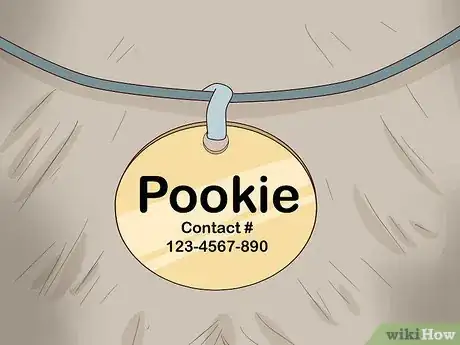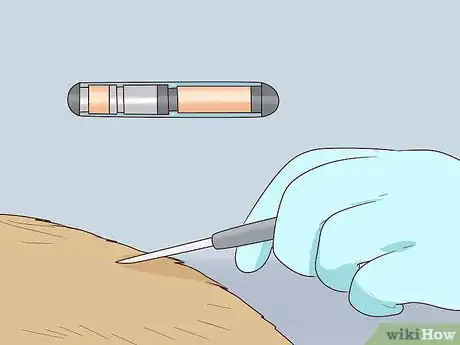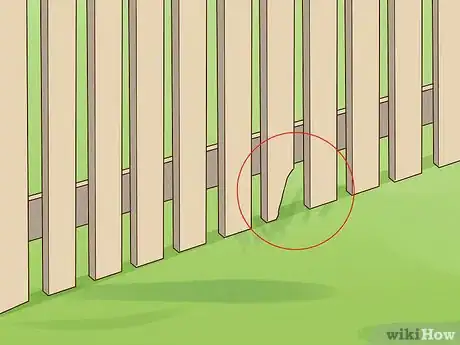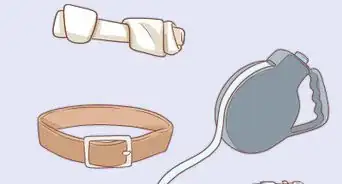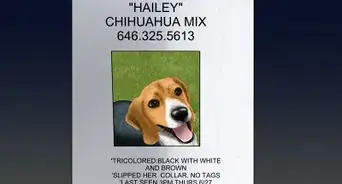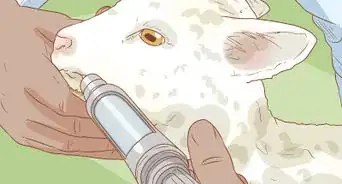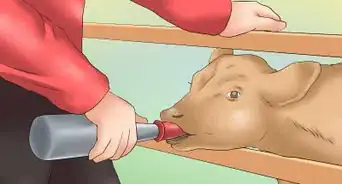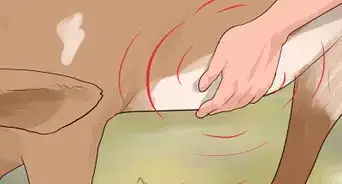This article was co-authored by Belgin Altundag. Belgin Altundag is a Certified Dog Trainer and the Owner of Happy Doggies Day Care/Day Camp in West Hollywood, California. A passionate animal lover, Belgin is knowledgeable about multiple training styles, including obedience training, problem-solving, activity training, and behavior modification. In addition to being an Animal Behavior College’s Certified Dog Trainer (ABCDT), Belgin has also completed the Training Cesar's Way Fundamentals of Dog Behavior and Training Programs 1 and 2 and is certified by the American Red Cross in Cat and Dog First-Aid.
There are 8 references cited in this article, which can be found at the bottom of the page.
wikiHow marks an article as reader-approved once it receives enough positive feedback. In this case, 85% of readers who voted found the article helpful, earning it our reader-approved status.
This article has been viewed 430,009 times.
Losing your dog is a scary time. Thankfully, you are more likely to find your dog again than not. It’s important to remain calm so you can look for your pet without anxiety clouding your judgment, and we’re here to help you do just that. Take a deep breath and use this article to help you find your lost companion.
Steps
Searching Your House
-
1Ask family members. If you haven't seen your dog in a while, check with your family members. It's possible the dog is hiding in one of their rooms or one of them took the dog for a walk. Plus, you can establish when someone last saw the dog.[1]
-
2Draw your dog out. Dogs love food, so you may be able to draw him out by shaking the treat or food bag. Wander through the house with it so your dog can hear it.[2]Advertisement
-
3Search methodically. Once you've established your dog isn't in plain sight, begin searching your house methodically. Check each room carefully, looking under beds and in closets. Make sure to hit every room, bathroom, and closet in the house. Don't forget to look under and behind furniture.[3]
-
4Look in unlikely places. Scared dogs can find unique places to hide. Look behind and in appliances, as dogs can get behind refrigerators or crawl in dryers. Also, be sure to check behind access panels and even in areas such as the water heater closet. Small dogs can even be under reclining chairs (behind the footrest) or behind books on a bookshelf.[4]
-
5Call your dog. As you're searching, be sure to keep calling out your dog's name. Your dog may be sleeping soundly in a corner, and she may not hear you at first.
Beginning the Outside Search
-
1Begin as soon as possible. You'll have a much better chance of finding your dog in the first 12 hours after she escapes. In fact, some experts note that nearly 90% of pets are found again if the owner searches in the first 12 hours.[5]
-
2Use your pet's name often. Your dog knows his name and may respond to it. Plus, it gives your dog an audible beacon to where you are.[6]
- Don't forget to use nicknames, too. If you've taken to calling your dog "Pookie" more often than "Princess," try alternating between the two.
-
3Take the treat bag with you. Food is a big motivator for any dog, so take the bag of treats with you. Shake the bag as you go along, and call out with the name you use for them.[7]
- For instance, if you call them biscuits, you'd shout, "Fido! Don't you want a biscuit?"
-
4Use the quiet. The most effective time to search with treat bags and by calling your dog's name is when it is quiet outside. Try early in the morning, so your dog feels safer coming out. Your dog may be out already at this time, looking for food.[8]
-
5Be a detective. When searching, check for signs of your pet. Look for prints in the mud or feces your dog left behind. See if you see any snags of fur. These clues can point you in the right direction.[9]
-
6
-
7Listen as much as you talk. You need to listen for your sounds of your dog, such as a whine, a bark, or a rustle. Your dog may lead you to her if you stop and listen.[12]
-
8Leave favorite items outside. Put a favorite toy outside, which may lead your dog home. Additionally, try leaving something with your scent outside, such as a dirty shirt, which may also draw your dog out.[13]
-
9Think about recent neighborhood events. That is, look at newly constructed or abandoned houses, as dogs can seek shelter inside. Also, consider if anyone has moved since your dog escaped, as dogs sometimes crawl into moving vans.[14]
-
10Use your car. You want to search the outside of your home on foot to check in tight spaces. However, if you don't find your dog, hop in the car to take a spin around the neighborhood. Drive slowly and take streets systematically. Keep your windows down, calling out for your pet as you go.[15]
-
11Start close but go further afield. Some dogs take off running when they get out. You should definitely search in a 1- to 2-mile radius the first day, but dogs can run up to 5 to 10 miles (8 to 20 km). While it is uncommon for dogs to go as far as 10 miles (16.1 km), it doesn't hurt to expand your search.[16]
-
12Ask for help. The more people you have looking, the more likely you are to find your dog. Ask for help from family members, friends, and neighbors, and be coordinated about how you search. That is, establish search areas for each person, so you're not wasting time overlapping areas.[17]
- You can also try contacting your local Police Department to see if anyone reported a lost dog running on the streets.[18]
-
13Talk to the neighbors. Your neighbors are a great resource for helping you find your dog. They may have seen him running in a particular direction, or one of them may have even taken him in after he lost his collar. Go door to door on your street, and bring a picture along to show them.[19]
- Also, be sure to check with people like the mail carrier who cover a large amount of ground in your neighborhood.[20]
-
14
-
15Check with veterinarian clinics. Call your vet, especially if your pet's tags had your vet's information on it. However, you should also check with other emergency clinics in the area, to make sure your animal wasn't brought in injured to another clinic.[25]
-
16Be safe when searching. Don't search at night by yourself, and take flashlights and cellphones with you while searching.[26]
-
17Continue looking. Pets can survive for a long time away from home. You may find your pet months from now, so keep looking and keep checking with your local shelters.[27]
Advertising for Your Pet
-
1Put up fliers.[28] Print out fliers with a picture of your dog, a description, the dog's name, and your phone number. Don't forget to add the general area she went missing from, though you shouldn't give an exact address. Also include the date.[29]
- Put the key message at the top. That is, include "LOST DOG" in a bold, readable font at the top of the flier. Keep the rest of the message short and to the point.[30]
- A color photo will work better than a black and white one. Make sure to pick one where you can clearly see your dog's face and distinguishing features.[31]
- Try using a brightly colored paper, as that can draw more attention to your flyer. You can also try offering a reward for the pet, which can help motivate people.[32]
- Try posting flyers at stores and restaurants and on telephone poles and trees. Work within a 1- to 2-mile radius of where your dog ran away, though it doesn't hurt to put them up farther away, as well. Dogs can run much farther.[33] Animal-themed places are especially appropriate, such as pet stores and clinics, but try any place that has a large number of people coming through, such as laundromats and gas stations. Always ask permission before putting up a flyer at a business.[34]
- Keep one key piece of information off the flyer. That is, hold back one identifying feature, such as a heart-shaped mark on your dog's hind-leg. That way, you can ask callers to provide a description of your dog and hopefully, weed out anyone trying to scam you.[35]
-
2Advertise on the internet. You can post on lost animal websites, as well as local classified ads websites, such as Craig's List. Also, use your own social network. Post notices to your friends and ask them to share the notices with their friends. The more people you reach, the more likely you are to find your dog.[36]
- Don't forget to make your post public so that it can be shared with other people. For instance, on Facebook you can change a post to public before you post it without changing your overall profile settings.
-
3Advertise in the newspaper. Take out an ad in your newspaper's classified section. Keep it short and to the point, including the same information you included on the flyer.[37]
-
4Be wary of scammers. Take someone with you if someone calls to say they found your pet. Ask to meet in a public place, and don't give the person a reward until you have your pet back.[38]
- When a person calls claiming to have your dog, ask the person to describe your dog thoroughly. Listen for the piece of key information you left off the flyer.[39]
-
5Check lost dog postings. On the same sites you're posting on, check the listings for found pets. Also, check the classifieds of your newspaper for found pets.
Preventing Your Dog from Getting Lost in the Future
-
1Put on an ID tag. ID tags should have your dog's name and your current phone number. That way, if someone finds your dog, that person can locate you. Be sure to update the tags if your information changes.[40]
-
2Get your dog microchipped. A microchip is a harmless chip that is inserted into the back of the neck. The chip contains an ID that any vet or shelter can scan for. The ID can then be used to find your contact information so that vets or shelters can call you when they find your dog.[41]
- Be sure to update your information as it changes, as out-of-date information will not be useful to your dog.[42]
- One reason you should microchip and have ID tags on your dog is because collars can come loose when dogs are outside. The tags are then lost, which won't help anyone get your dog back to you.[43]
-
3Close up any escape points. Make sure you don't have any holes in your backyard fences or anywhere that makes it easy for your dog to escape. Also, be careful when opening the door, making sure your dog isn't waiting to dart out.
-
4Try a GPS microchip or tag.[44] You can purchase a tag that goes on your dog's collar that has GPS tracking. If your dog gets loose, you can use your phone to track her down. For a more advanced option, microchips are available with this same technology, which would be embedded in your dog's skin, so it couldn't be lost.
Expert Q&A
-
QuestionHow can a lost dog find its way home?
 Belgin AltundagBelgin Altundag is a Certified Dog Trainer and the Owner of Happy Doggies Day Care/Day Camp in West Hollywood, California. A passionate animal lover, Belgin is knowledgeable about multiple training styles, including obedience training, problem-solving, activity training, and behavior modification. In addition to being an Animal Behavior College’s Certified Dog Trainer (ABCDT), Belgin has also completed the Training Cesar's Way Fundamentals of Dog Behavior and Training Programs 1 and 2 and is certified by the American Red Cross in Cat and Dog First-Aid.
Belgin AltundagBelgin Altundag is a Certified Dog Trainer and the Owner of Happy Doggies Day Care/Day Camp in West Hollywood, California. A passionate animal lover, Belgin is knowledgeable about multiple training styles, including obedience training, problem-solving, activity training, and behavior modification. In addition to being an Animal Behavior College’s Certified Dog Trainer (ABCDT), Belgin has also completed the Training Cesar's Way Fundamentals of Dog Behavior and Training Programs 1 and 2 and is certified by the American Red Cross in Cat and Dog First-Aid.
Certified Dog Trainer Try leaving out food and water in a place that's really familiar to your dog.
Try leaving out food and water in a place that's really familiar to your dog. -
QuestionWhere can I post about my lost dog?
 Belgin AltundagBelgin Altundag is a Certified Dog Trainer and the Owner of Happy Doggies Day Care/Day Camp in West Hollywood, California. A passionate animal lover, Belgin is knowledgeable about multiple training styles, including obedience training, problem-solving, activity training, and behavior modification. In addition to being an Animal Behavior College’s Certified Dog Trainer (ABCDT), Belgin has also completed the Training Cesar's Way Fundamentals of Dog Behavior and Training Programs 1 and 2 and is certified by the American Red Cross in Cat and Dog First-Aid.
Belgin AltundagBelgin Altundag is a Certified Dog Trainer and the Owner of Happy Doggies Day Care/Day Camp in West Hollywood, California. A passionate animal lover, Belgin is knowledgeable about multiple training styles, including obedience training, problem-solving, activity training, and behavior modification. In addition to being an Animal Behavior College’s Certified Dog Trainer (ABCDT), Belgin has also completed the Training Cesar's Way Fundamentals of Dog Behavior and Training Programs 1 and 2 and is certified by the American Red Cross in Cat and Dog First-Aid.
Certified Dog Trainer Social media is a great place to spread the word about your lost dog. In fact, you can make a page that's dedicated to your pet.
Social media is a great place to spread the word about your lost dog. In fact, you can make a page that's dedicated to your pet. -
QuestionHow do I keep my dog from getting lost?
 Belgin AltundagBelgin Altundag is a Certified Dog Trainer and the Owner of Happy Doggies Day Care/Day Camp in West Hollywood, California. A passionate animal lover, Belgin is knowledgeable about multiple training styles, including obedience training, problem-solving, activity training, and behavior modification. In addition to being an Animal Behavior College’s Certified Dog Trainer (ABCDT), Belgin has also completed the Training Cesar's Way Fundamentals of Dog Behavior and Training Programs 1 and 2 and is certified by the American Red Cross in Cat and Dog First-Aid.
Belgin AltundagBelgin Altundag is a Certified Dog Trainer and the Owner of Happy Doggies Day Care/Day Camp in West Hollywood, California. A passionate animal lover, Belgin is knowledgeable about multiple training styles, including obedience training, problem-solving, activity training, and behavior modification. In addition to being an Animal Behavior College’s Certified Dog Trainer (ABCDT), Belgin has also completed the Training Cesar's Way Fundamentals of Dog Behavior and Training Programs 1 and 2 and is certified by the American Red Cross in Cat and Dog First-Aid.
Certified Dog Trainer If your dog is known from running away, I always recommend buying a GPS collar that can be tracked by a cellphone app or by the company that made the collar. You can also try stimulating your dog, as it may be running due to boredom.
If your dog is known from running away, I always recommend buying a GPS collar that can be tracked by a cellphone app or by the company that made the collar. You can also try stimulating your dog, as it may be running due to boredom.
References
- ↑ https://www.aspca.org/pet-care/finding-lost-pet
- ↑ https://www.aspca.org/pet-care/finding-lost-pet
- ↑ https://www.aspca.org/pet-care/finding-lost-pet
- ↑ http://www.catsinthebag.org/
- ↑ http://public.homeagain.com/find-a-lost-dog.html
- ↑ http://www.fairfaxcounty.gov/police/animal/find-lost-pet.htm
- ↑ http://www.fairfaxcounty.gov/police/animal/find-lost-pet.htm
- ↑ http://www.catsinthebag.org/
- ↑ http://www.catsinthebag.org/
- ↑ http://www.fairfaxcounty.gov/police/animal/find-lost-pet.htm#Usenewspaperstoassistinyoursearch
- ↑ https://www.aspca.org/pet-care/finding-lost-pet
- ↑ http://www.fairfaxcounty.gov/police/animal/find-lost-pet.htm#Usenewspaperstoassistinyoursearch
- ↑ http://www.fairfaxcounty.gov/police/animal/find-lost-pet.htm#Usenewspaperstoassistinyoursearch
- ↑ http://www.catsinthebag.org/
- ↑ https://www.aspca.org/pet-care/finding-lost-pet
- ↑ http://www.lostdogsillinois.org/categories/search-strategies/
- ↑ http://www.fairfaxcounty.gov/police/animal/find-lost-pet.htm
- ↑ Belgin Altundag. Certified Dog Trainer. Expert Interview. 11 August 2021
- ↑ http://public.homeagain.com/find-a-lost-dog.html
- ↑ http://public.homeagain.com/find-a-lost-dog.html
- ↑ Belgin Altundag. Certified Dog Trainer. Expert Interview. 11 August 2021
- ↑ https://www.aspca.org/pet-care/finding-lost-pet
- ↑ Belgin Altundag. Certified Dog Trainer. Expert Interview. 11 August 2021
- ↑ http://www.fairfaxcounty.gov/police/animal/find-lost-pet.htm
- ↑ http://www.fairfaxcounty.gov/police/animal/find-lost-pet.htm
- ↑ http://www.fairfaxcounty.gov/police/animal/find-lost-pet.htm
- ↑ http://www.humanesociety.org/animals/resources/tips/what_to_do_lost_pets.html
- ↑ Belgin Altundag. Certified Dog Trainer. Expert Interview. 11 August 2021
- ↑ http://www.humanesociety.org/animals/resources/tips/what_to_do_lost_pets.html
- ↑ https://www.aspca.org/pet-care/finding-lost-pet
- ↑ http://www.humanesociety.org/animals/resources/tips/what_to_do_lost_pets.html
- ↑ http://www.fairfaxcounty.gov/police/animal/find-lost-pet.htm
- ↑ http://www.fairfaxcounty.gov/police/animal/find-lost-pet.htm
- ↑ https://www.aspca.org/pet-care/finding-lost-pet
- ↑ http://www.fairfaxcounty.gov/police/animal/find-lost-pet.htm
- ↑ http://www.humanesociety.org/animals/resources/tips/what_to_do_lost_pets.html
- ↑ http://www.fairfaxcounty.gov/police/animal/find-lost-pet.htm#Usenewspaperstoassistinyoursearch
- ↑ http://www.fairfaxcounty.gov/police/animal/find-lost-pet.htm
- ↑ http://www.humanesociety.org/animals/resources/tips/what_to_do_lost_pets.html
- ↑ https://www.aspca.org/pet-care/finding-lost-pet
- ↑ https://www.aspca.org/pet-care/finding-lost-pet
- ↑ https://www.aspca.org/pet-care/finding-lost-pet
- ↑ http://public.homeagain.com/find-a-lost-dog.html
- ↑ Belgin Altundag. Certified Dog Trainer. Expert Interview. 11 August 2021
About This Article
If you've lost your dog, search outdoors by calling your dog's name as you walk around and shake a treat bag. Then, get in your car and drive slowly in a 1-2 mile radius around your home to look for your dog. Don't forget to look up and down as you go, since dogs are able to burrow under porches or climb on top of cars. If there's no sign of your pet, try encouraging it to come home by leaving its favorite toy outside or something with your scent on it, like a shirt. You should also talk to your neighbors so they know to keep an eye out for your pet. To find out how to advertise for your lost dog and why asking neighbors can help, read on!
